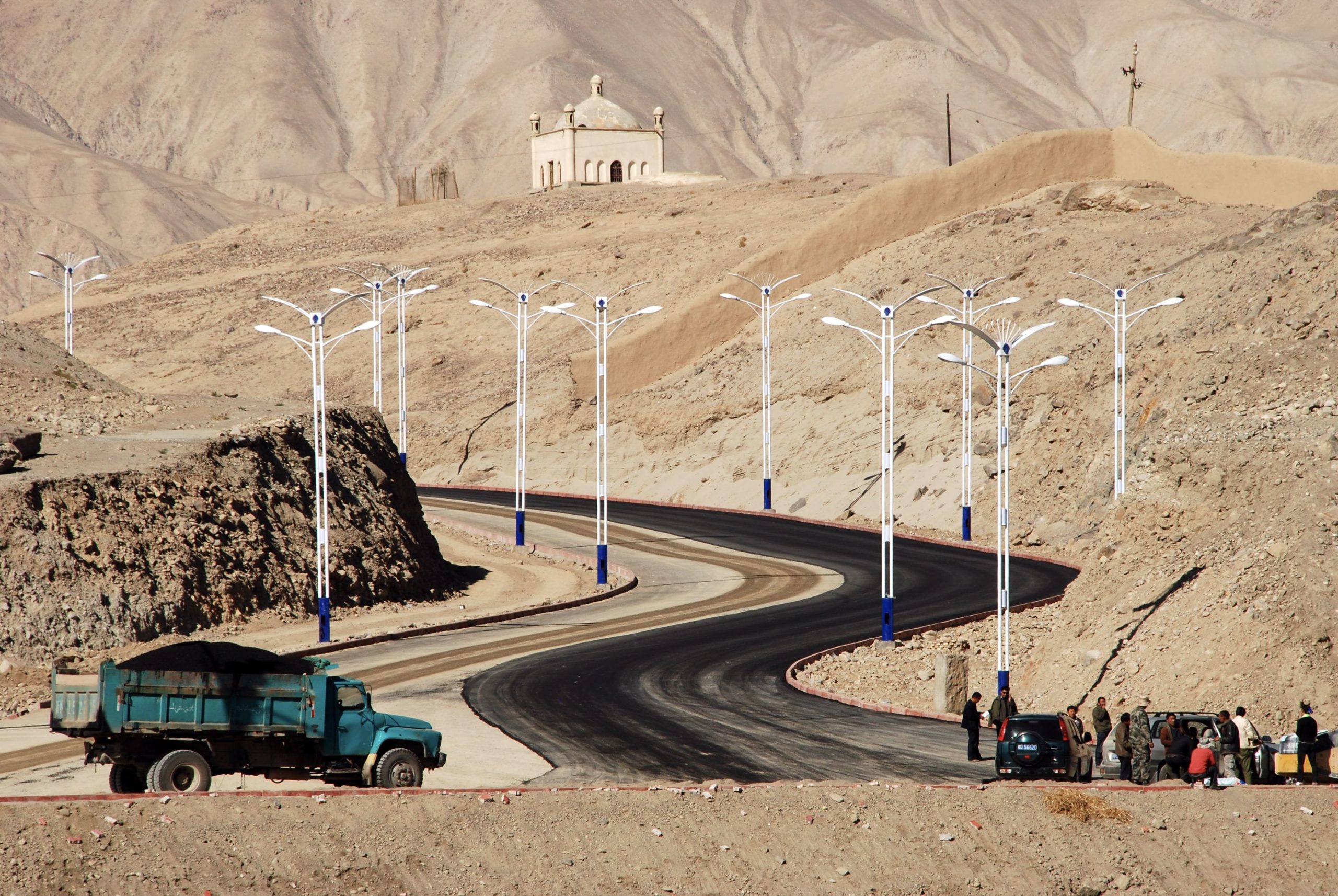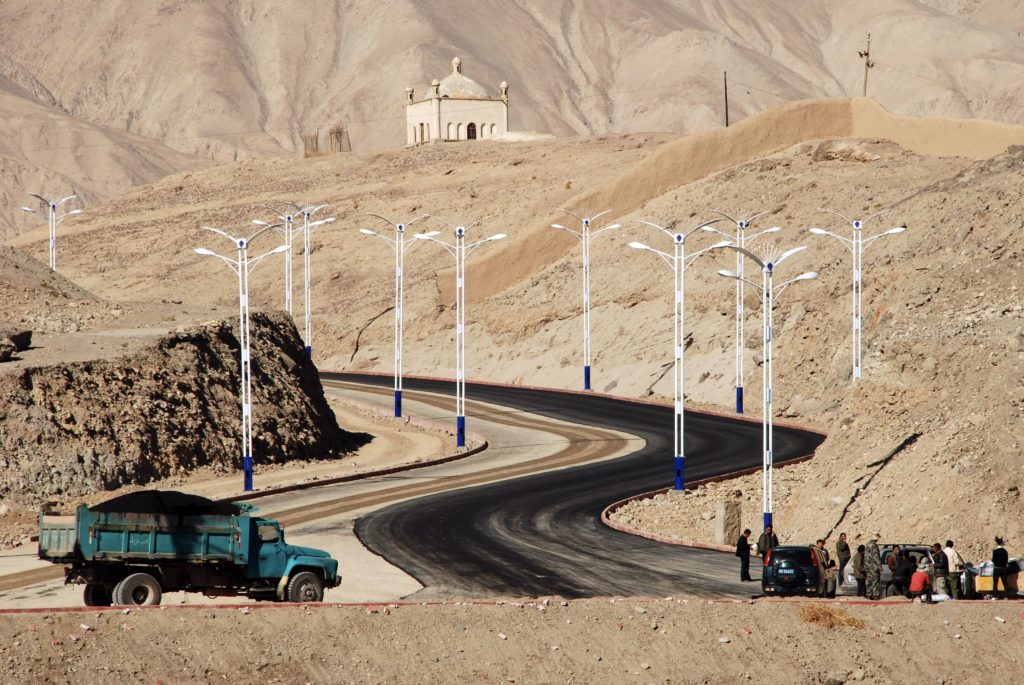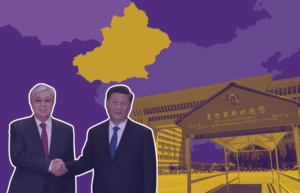Since the official launch of the Belt and Road Initiative in 2013, much has been said and speculated about China’s growing presence on the global stage – some offering nuanced insights, others fearmongering. Novastan sat down with leading researchers Agnieszka Joniak-Lüthi and Alessandro Rippa to unpack some of these fears and frictions surrounding China’s mode of engagement abroad, and in Central Asia more specifically. Unveiled at the Nazarbayev University Campus in Astana, Kazakhstan, the Belt and Road Initiative (BRI) is an unprecedented mega-infrastructural undertaking by China that aims to connect places and people in Asia with Europe and Africa. In recent years, China’s ever-palpable presence, within and beyond the BRI label – along roads and corridors, at mine sites, at logistics hubs and in free economic zones – has triggered fears of China grabbing sovereign territories and locking cooperating countries into debt spirals. This is also the case in Central Asia where “anti-Chinese protests” have even become a standalone category in protest trackers over time. Within the framework of the research projects ROADWORK and Environing Infrastructure, Agnieszka Joniak-Lüthi and Alessandro Rippa, respectively, steer ethnographic research efforts about how China operates through specific infrastructure in specific places. Agnieszka and Alessandro, professors of anthropology, together with a third project – China Made – have recently published two factsheets where they demystify the BRI and look at China’s global development model beyond the BRI. In their conversation with Novastan, they bust some of the sticky myths about the BRI and discuss the performance of different infrastructural initiatives, including those made by the EU and G7. We conclude our interview with words of caution and courage in engaging with China in Central Asia. Novastan: Which key myths are you busting with these factsheets?Alessandro Rippa: One key myth is the notion that global China operates largely outside of prevailing global development frameworks. While it is certainly true that China is trying to build its own institutions and leverage its growing economic power across the region and beyond, it also works alongside other existing alternative models of development. Projects with Chinese investments are often co-funded by other international donors and development banks. The second myth is the idea that China’s international engagement has begun relatively recently within the last 20-30 years, if not in 2013 with the launch of the BRI. In both factsheets, we show the historical roots of some of the key BRI projects. For example, the Karakoram highway project, which is now known as the China-Pakistan Economic Corridor, goes back to friendship between China and Pakistan in the 1960s, predating the BRI by half a century.

Agnieszka Joniak-Lüthi: I could add two more aspects. The first one relates to maintenance. What we see in many BRI projects is that maintenance is completely neglected. This is an oft-forgotten aspect; it is not enough to build something, you also need to be able to maintain it, which costs more than the construction itself over the years. Thus, when we assess the power of the BRI, we should remember that infrastructure decays and needs maintenance to function. What will be the developmental outcomes of the infrastructure currently being built? This is difficult to say because we do not know whether they will be maintained and whether funds for them will be available. The second myth or assumption which circulates among policymakers is that infrastructure automatically creates development, progress, wealth, or an increase in gender equality. Our research shows that infrastructure, especially large-scale infrastructure and mega-projects, can also increase inequality; it can discriminate and exclude if not supported by other measures. Infrastructure is not a magical object and has to be planned and implemented in specific ways to generate positive change for those beyond the already privileged. There is so much attention to the BRI from both policymakers and scholars. Why do these myths still prevail? AJL: I guess many myths come from the fact that there is still very little research on the ground. A lot of the analyses, especially in the first 5-7 years of the BRI, were conducted by policy and geopolitical analysts, who looked at things from a large-scale perspective without doing ethnographic or detailed, long-term research. Many myths were born during that period, and it is very difficult to fight them now because they are already very well established. Both of our projects were born out of this idea that there was so little ethnographic research on the BRI. Our factsheets, we hope, will contribute to dismantling some of these myths. I guess these myths also live on because they are catchy. It is easier to think of the world in polarised, black-and-white terms than to get into the nitty-gritty complexities of the everyday.

AR: Nuance is very difficult to get across and there is still a lack of generalised understanding among Western publics about how China “works.” In China, as in every other country, there is a very striking difference between how the government says it works and how the country actually works. This is true for domestic policy, and this is true for foreign policy and global investments. Be it for lack of knowledge, be it because a lot of the analyses at the level of discourse do not really engage with how this is turned into practice, we still have this notion that Chinese leaders think in decades. Whereas when you look at how policy is designed and put into practice, you realise that it is contingent on very specific political quotidian matters. In Western press and publics, there is this sense that there must be a grand strategy behind the BRI that we do not see and that we don’t know about, which we need to somehow both fear and be inspired by. Obviously, there is strong Orientalism at the core of these ideas, where China is both mystical and to be feared. Do you see development following infrastructure? Where and how does China and the BRI come in? How Chinese are “Chinese” infrastructure projects?AJL: It all depends how we define development. What I see in my research site, the Xinjiang Uyghur Autonomous Region, is that when a road is built or upgraded, a lot of things change. Whether we can call it development, and thus value it positively, is a complex question. The new road does bring benefits to, for example, restaurant owners who have their restaurants at the roadside. Truck drivers are very happy to have an asphalt road they can drive on. This shortens travel time, so they can spend more time with their families; their journeys are less arduous. There will always be actors who benefit from a road, be it individuals or groups, more powerful actors such as investors, or the people who live along and with the new infrastructure. But there is always another side to the coin. A new highway will exclude those who can’t afford a car to drive on it. Others will be excluded because of their ethnicity, like in Xinjiang. Being Uyghur in Xinjiang makes travelling very difficult, as all the police checkpoints along the new, beautifully asphalted expressways, provincial roads, and even village roads make travelling for them nearly impossible. Your ethnicity, your gender, and your economic status all influence whether you can benefit from a road or other infrastructure, or whether you will instead be living with its negative consequences such as pollution, habitat fragmentation, noise, animal death or even limited access to your fields across the road.

AR: The second factsheet on China’s global development goes into detail about what is uniquely Chinese about Chinese development projects. Usually, they are completed faster, they are cheaper, and they come with a different set of strings attached. Chinese policymakers like to say that their projects come with no strings attached as compared to North American and European donors, who may ask for particular changes in economic management or democratic reforms. The recognition of China’s policy on Taiwan and territorial claims in other parts of the South China Sea are some of these Chinese strings. Yet ultimately, Chinese infrastructure remains trapped within very similar financial mechanisms and developmental challenges as infrastructure projects financed by the West. The ramifications and effects on development are also contingent on the political-economic circumstances of the host countries. Read more on Novastan: Russia commits to railroad corridor China-Kyrgyzstan-Uzbekistan If infrastructure is built in a country where most resources are concentrated in fewer hands, such as in authoritarian countries like Tajikistan or Myanmar, then most of the revenue produced from that project will reinforce a particular system and will not challenge it – regardless of whether it is a Chinese project or a World Bank-funded project. I am obviously oversimplifying here. To give an example, if you look at the Karakoram highway or at the roads connecting Western China with Kyrgyzstan, built in the early 2000s, these were instrumental in thriving cross-border economies. Uyghur traders, mostly in the Kashgar region, benefited from better road conditions. Everybody was very keen on having new and better roads. But they only benefited from new roads as long as the political situation allowed for it. Once it became more complicated, and then impossible, for many Uyghurs to get passports and travel abroad, the good roads and asphalt were not conducive to commercial exchange anymore. We cannot think of infrastructure outside of the broader political setting in which they are embedded. How do other infrastructure initiatives perform in your opinion – are they more equitable and just? I am thinking about the existing projects funded by the EU but also the new global initiatives such as the EU Global Gateway or G7 infrastructural initiative.AJL: It is good that we have a few large infrastructural initiatives now. I am quite surprised that Europe and North America waited so long to launch their own initiatives. Variety and diversity are always better than having just one initiative, especially one which has such extreme media coverage – in fact, the BRI might not be as huge as the media would like to think. It was high time for Europe and North America to react with their own initiatives concerning what infrastructural development might look like, which is also key for public relations. But these plans are not very concrete yet. They are still just initiatives. It is good to have alternatives, but let’s see what the details are going to be. I hope they will offer a good alternative to the funding coming from China and that they will not become bogged down in bureaucratic procedures. The speed of project funding and realisation will be the key. Read more on Novastan:In Central Asia, China is taking advantage of Russia’s isolation at warAR: It is too early to say but I do hope, particularly with the G7 initiative, two things. One is that it is not just an anti-China, anti-BRI initiative to counter Chinese influence and power. We really need to rethink global development, and this could be an occasion to do so rather than an occasion to restate a particular anti-China global alliance. Secondly, I hope that, unlike the BRI, the focus will be less on large-scale flagship projects. If history tells us one thing, it is that large-scale infrastructure projects tend to be mired in corruption and environmental issues. Rather, I hope that the resources will be used for smaller-scale projects, driven by local initiatives that respond to actual needs of the population. Because I hardly see the point in having a train that runs from Kazakhstan to Spain or Portugal if it traverses countries which lack basic infrastructure like electricity, heating, and water. I hope that we can move past these types of flagship projects around connectivity and focus on what matters most at the local level. What else should Novastan readers know and watch regarding China’s presence in Central Asia within and beyond the BRI label?AJL: I would encourage civil society in Central Asia not to give up on training Chinese companies to include more local people in the decision-making around infrastructure projects. We have successful examples of such processes in Mongolia in its mining industry. Even if the scale of China and Chinese activities is huge and intimidating, it is important to push for civil involvement in all those infrastructure projects. Though China is this giant right across the border, it is still individual companies realising these projects. These companies do not have the opportunity to learn to dialogue with civil society when operating within China. It is a new skill they must acquire when operating abroad. The role of the countries where the BRI is active is to train Chinese companies to have more dialogue with the public, and to have more engagement with the local needs and the opposition. Thus, I hope that civil society in Central Asia will remain strong and try to put leverage on Chinese companies, or on any company for that matter. AR: We should understand China as very diverse. There is not one single actor, there are multiple actors involved, often with different agendas and goals, from local governments to the central government with different foreign policies, and from private companies to state-owned enterprises. These can have conflicting agendas and there is room for civil societies in Central Asia to leverage these differences to their advantage. Also, readers of Novastan, always keep in mind: what are we thinking about when we think about China? Are we thinking about central government or local government policy? Certainly, one of the singularities of the Chinese model of development is that private and state-owned enterprises align closer to government aims than their European or North American counterparts. But that does not mean that they are always fully aligned. There is often a difference between what is being said and what is being done. In China as everywhere else, we should always keep that in mind.
Interview by Dr. Beril Ocakli, Researcher at ZOiS Berlin, where she leads the project China, the EU, and Economic Development in Eastern Europe and Eurasia.
Edited by Mari Paine
For more news and analysis from Central Asia, follow us on Twitter, Facebook, Telegram, Linkedin or Instagram.
 China in Central Asia: Fact-checking and myth-busting
China in Central Asia: Fact-checking and myth-busting 



